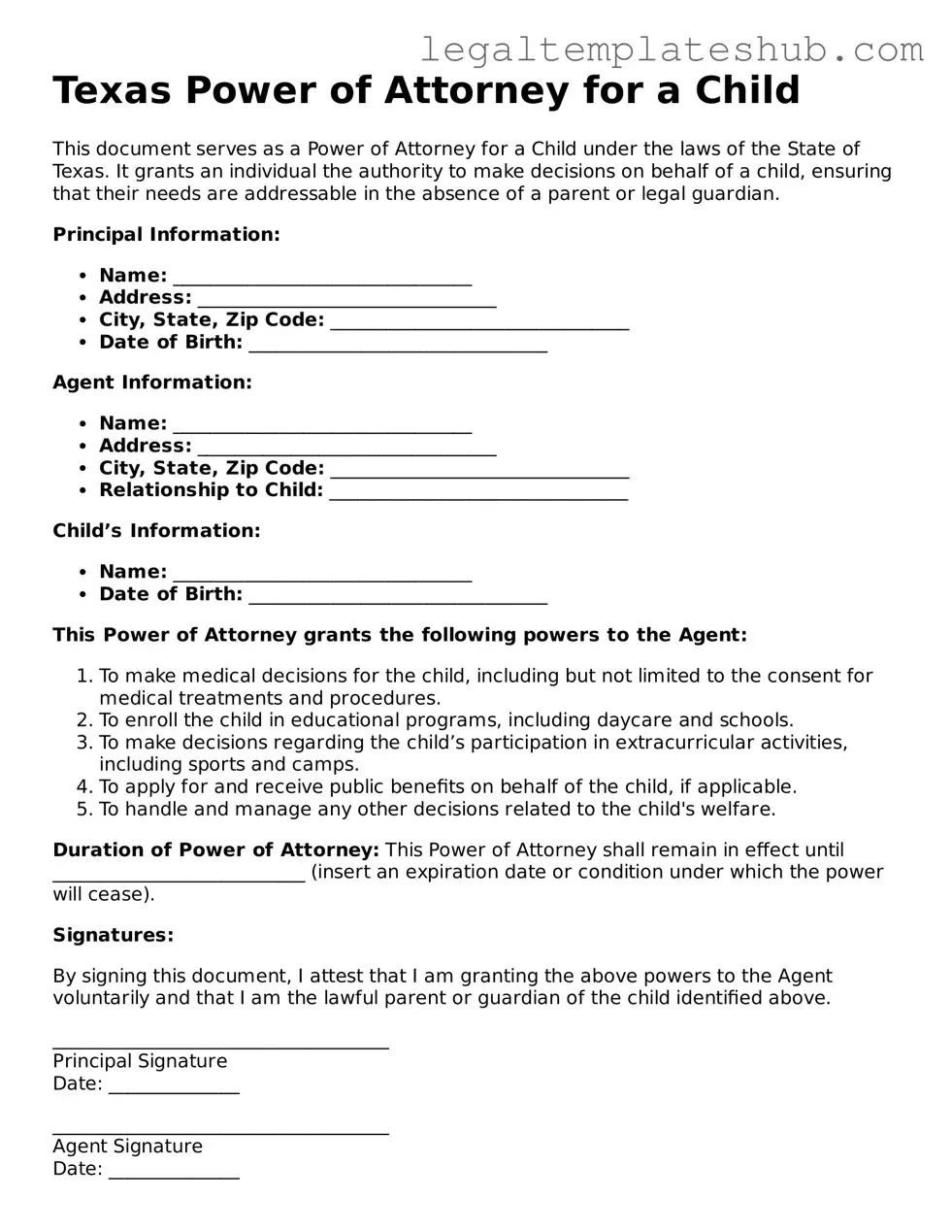Printable Power of Attorney for a Child Document for Texas
The Texas Power of Attorney for a Child form allows a parent or guardian to grant temporary authority to another adult to make decisions on behalf of a child. This form is useful in situations where the parent cannot be present, such as during travel or medical emergencies. To ensure your child's needs are met, consider filling out the form by clicking the button below.
Access Editor
